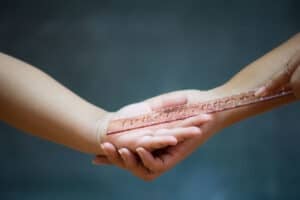Corporal punishment taught me two valuable lessons: your actions can have unpleasant consequences, so think first; and life is not fair.

They say if you have a good teacher in your school career, you’ll remember them long after.
I remember my teachers not because of what they taught us, but because of the differences in their chosen weapons. The Afrikaans teacher, Mevrou Smuts, wielded a thin bamboo stick, with a 9mm bullet cartridge case glued on to the end. As that brass tip headed toward the bum of the miscreant, it would accelerate and sting like the devil. Or so I was told: Mevrou Smuts was not our Afrikaans teacher.
That honour fell to Stellenbosch old boy “Naas” Ferreira. He was our rugby coach, too, and we respected him. We also knew that if we stepped out of line, he would use his discipline weapon, a wooden chair leg. He used it on me only once – when some of us tried to have a rugby discussion … in English.
Then there was “Rab” Wright, the long-suffering physical science master who, even with his trademark patience of a saint, finally snapped with the clowns in the back row. (In our defence: it was a chalk fight, but we had been ambushed and were only responding when he walked into the classroom. The instigators went unseen and unpunished.) Two cover drives to a 16-year-old backside with a Gray-Nicolls cricket bat made the point that we had overstepped the mark.
The “hitting surface” of a cricket bat being what it is, coupled with Rab’s anger, meant buttocks that felt as though they had been dipped in petrol and set alight … and a week-long bruise that meant the beating was the gift that kept on giving.
Then there was Mr Buckland, the wiry geography teacher, who used a fan belt on those who would mangle hemispheres and isotherms. And the “Galloping Tapeworm”, the lanky English master who used an 18-inch ruler with a metal edge to give us “bacon slices”. A “bacon slice”, by the way, is excruciating, because it really does feel as if the outer layer of your arse has been thinly sliced. Without anaesthetic.
People are sometimes surprised when I tell them I only ended up in the deputy headmaster’s office for a beating once in my high school career. Then we got three lashes from the sour and feared Mr Heunis, with what looked like it was once an umbrella handle. Did that solitary visit mark me out as a “goody-goody”? Hardly. The reality was that you had to virtually commit an assault in front of the entire assembly to merit the supreme sanction. Our deputy head’s visit was because we were jumping up on a wall, to see who could record the highest shoe print (yes, we were top A-level students at the time.)
My wife, who teaches at a girls’ school, cannot understand that sort of brutality. I try to explain that testosterone-filled teenage boys will start trouble in an empty house and, in those days, pain was the only thing that got through to us.
I don’t think the beatings brutalised me – at least not in any way I am aware of – and we all bore our scars with pride and never held anything against those who administered the punishment.
However, today’s kids don’t follow as blindly as we did in my day. They want reasons and explanations. And they live in a world where casual violence by those in authority is no longer tolerated.
On the other hand, corporal punishment taught me two valuable lessons: your actions can have unpleasant consequences, so think first; and life is not fair.
Brendan Seery.








